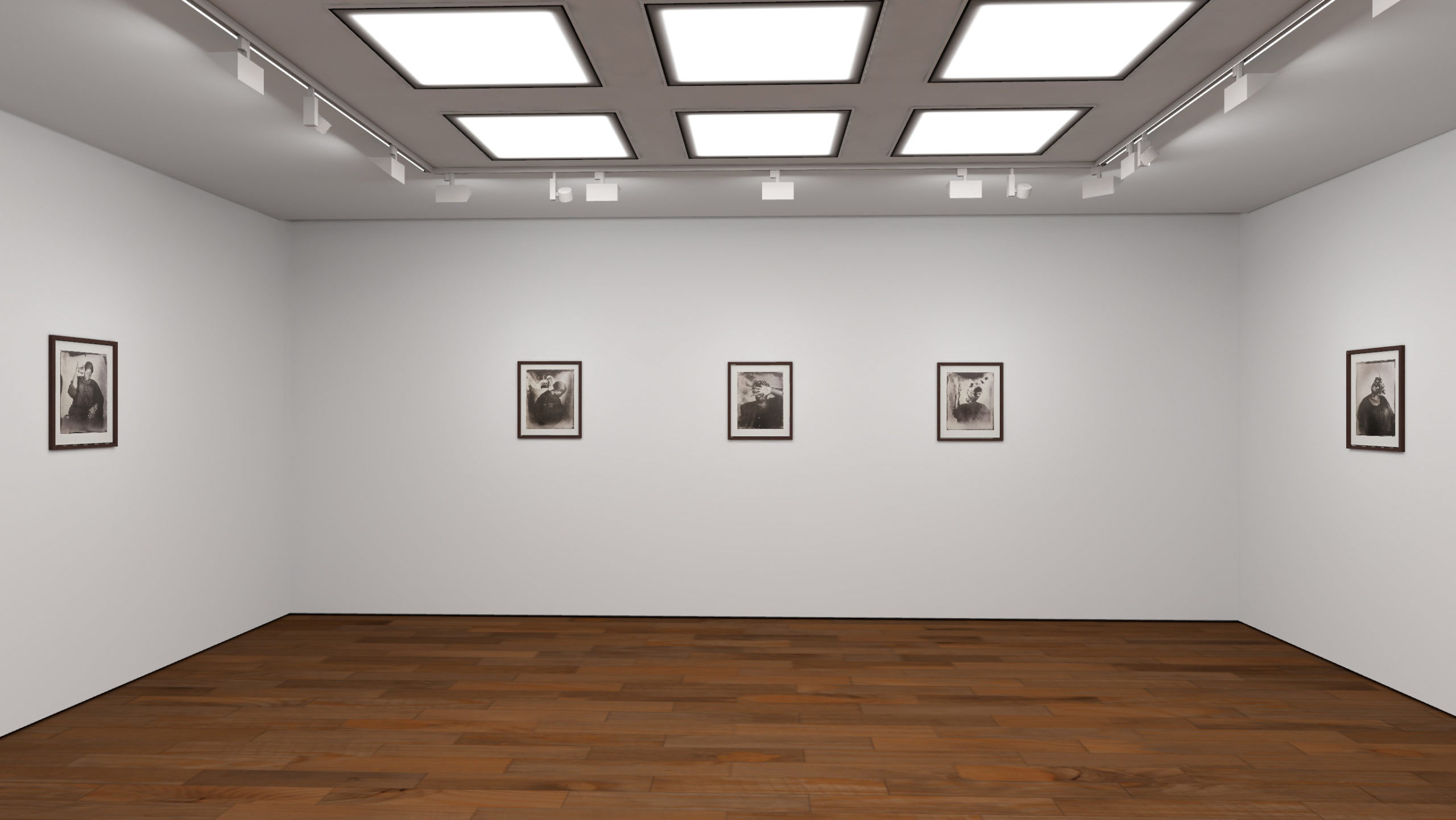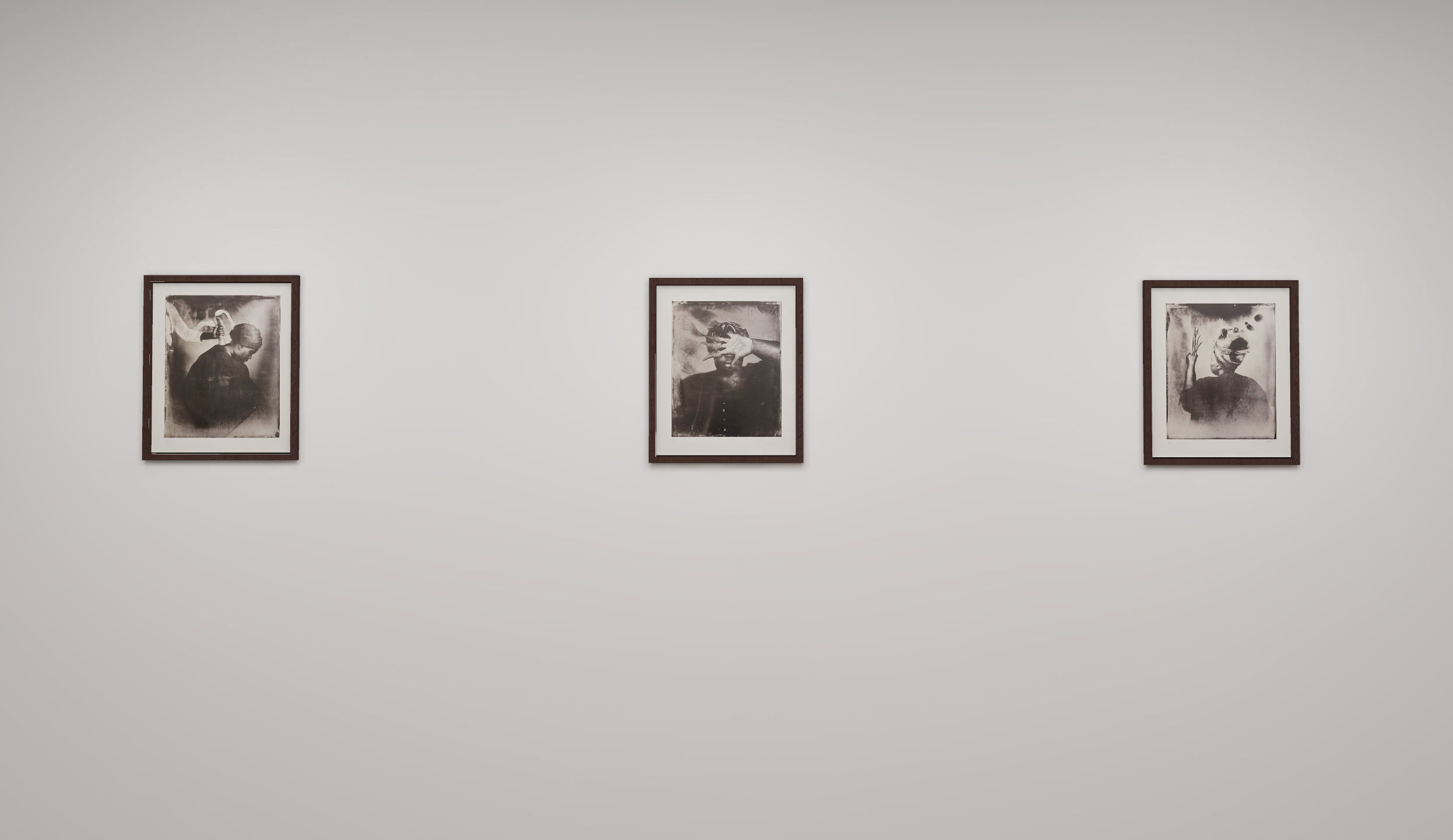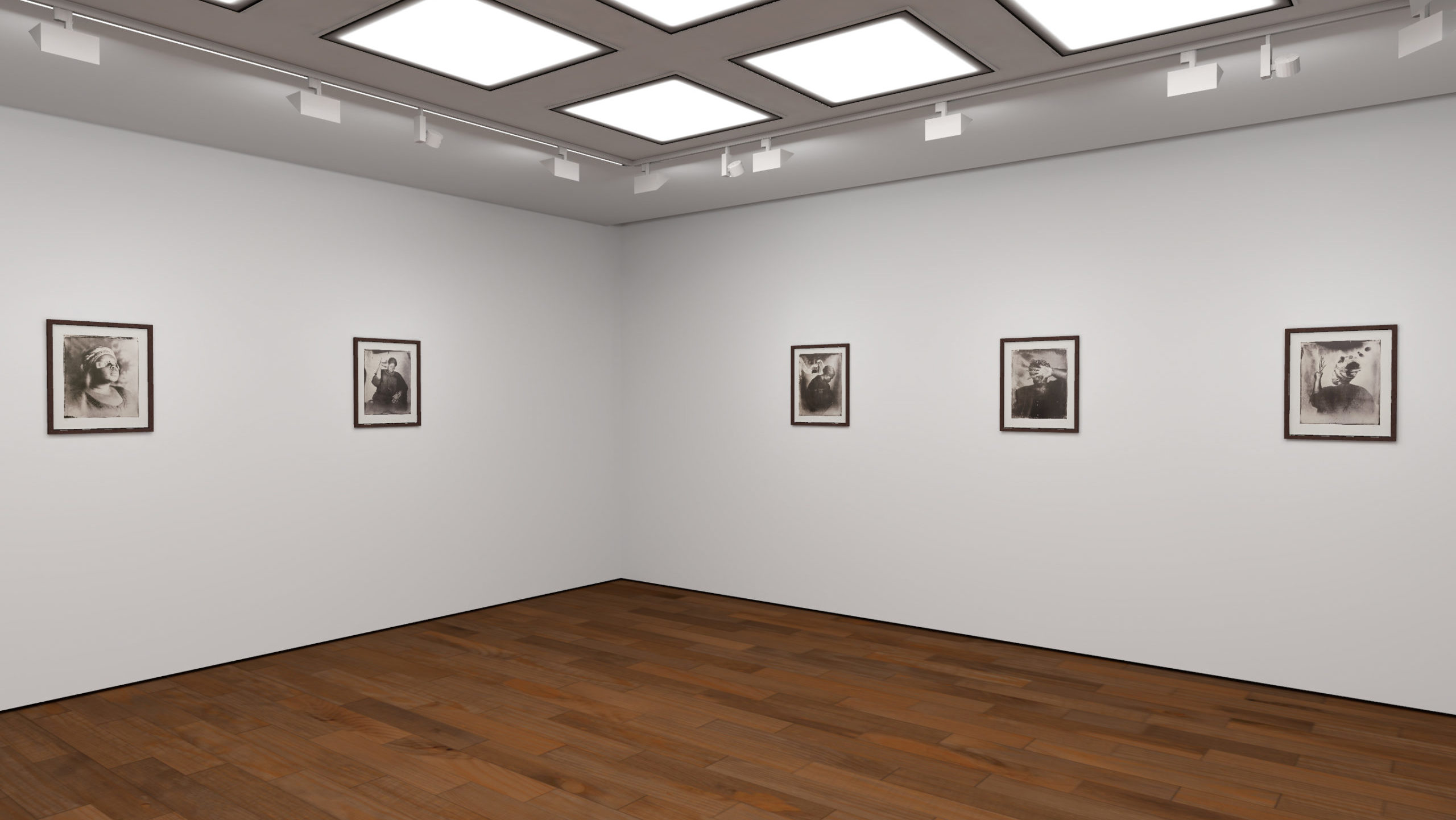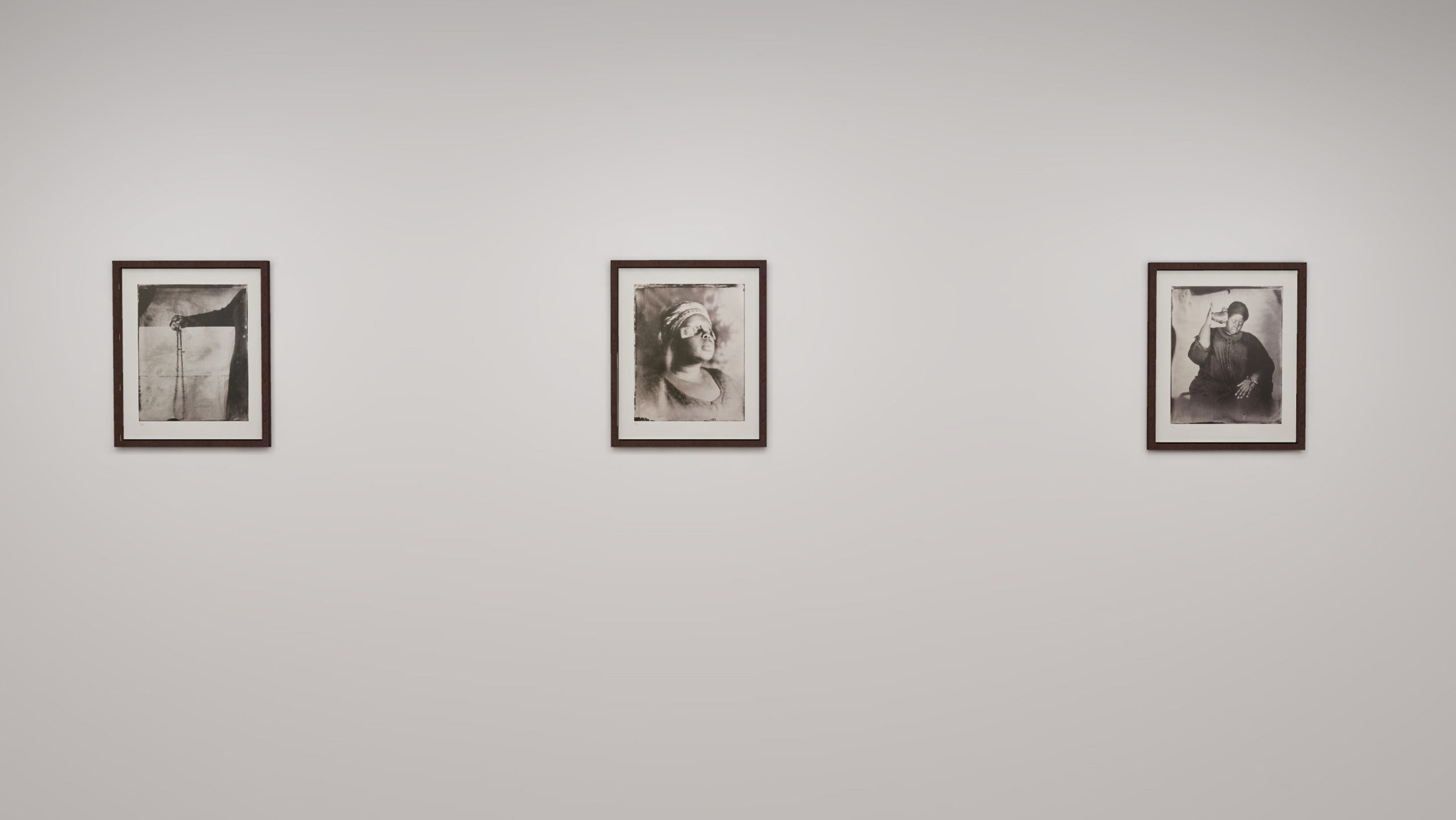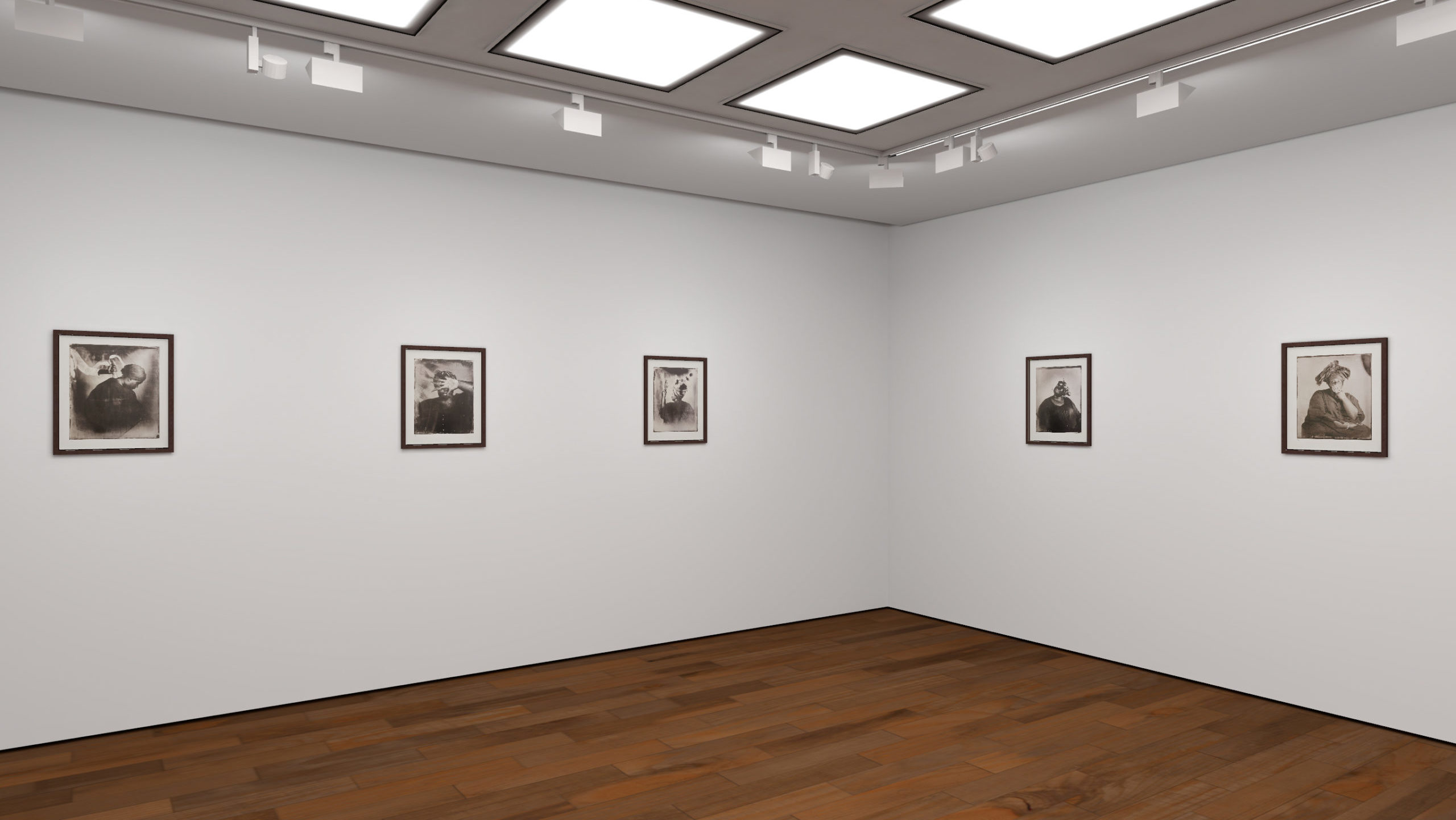Khadija Saye: in this space we breathe
7 July– 8 August 2020
‘The series was created from a personal need for spiritual grounding after experiencing trauma. The search for what gives meaning to our lives and what we hold onto in times of despair and life changing challenges.’ — Khadija Saye
Khadija Saye: in this space we breathe, a portfolio of nine silkscreen prints by the late British-Gambian artist, is offered in support of the Estate of Khadija Saye and the Khadija Saye IntoArts Programme. This special presentation for London Collective on Vortic Collect coincides with the launch of Breath is Invisible (7 July–9 Oct 2020), a new public art project in Notting Hill, of which Saye’s is the first of three site-specific exhibitions. An installation of nine large-scale prints of the artist’s most celebrated works will be shown across the façade of 236 Westbourne Grove.
Last year Victoria Miro established a studio space in Venice for invited artists to spend extended time in the historic city and make new bodies of work. During a recent two-month residency, Flora Yukhnovich used the opportunity to engage more fully with Venetian culture. Her sources include the music of Vivaldi and the memoirs of Casanova, in addition to one of her key influences, Giovanni Battista Tiepolo, whose works including ceiling frescos in the Ca’ Rezzonico museum and the Chiesa Santa Maria della Visitazione she was able to study first hand to create this new suite of paintings for this exhibition.
Flora Yukhnovich: The Venice Paintings is presented by Victoria Miro in association with Parafin and is available to view both here and via the App Store on Vortic Collect.
Khadija Saye
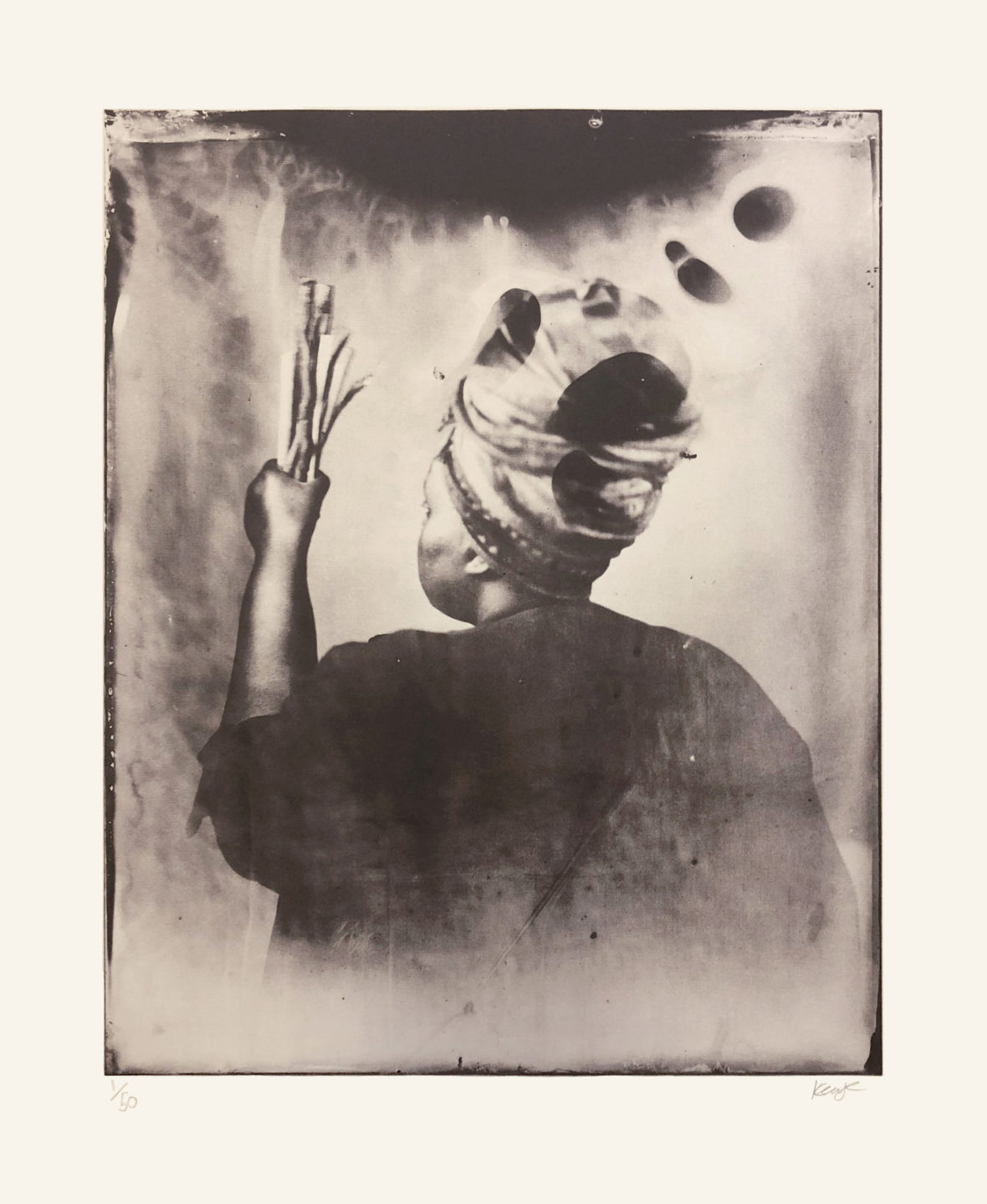
Available as a portfolio of nine silkscreen prints on Somerset Satin White 300gsm paper
Each: 61.3 x 50.2 cm
24 1/8 x 19 3/4 in
Edition of 50
Khadija Saye, Sothiou, 2017
More infoKhadija Saye was a Gambian-British artist who tragically died in the Grenfell Tower fire on 14 June 2017, aged just 24. Despite her young age, she achieved recognition as a hugely talented artist and had already produced significant work, showing extraordinary promise for the future. Saye was honoured to be the youngest exhibitor in the Diaspora Pavilion at the 2017 Venice Biennale, where her works were shown alongside those of established artists such as Isaac Julien and Yinka Shonibare, who were among a number of mentors to the younger artists involved in the Diaspora Pavilion project.
2

Available as a portfolio of nine silkscreen prints on Somerset Satin White 300gsm paper
Each: 61.3 x 50.2 cm
24 1/8 x 19 3/4 in
Edition of 50
Khadija Saye, Tééré, 2018
More info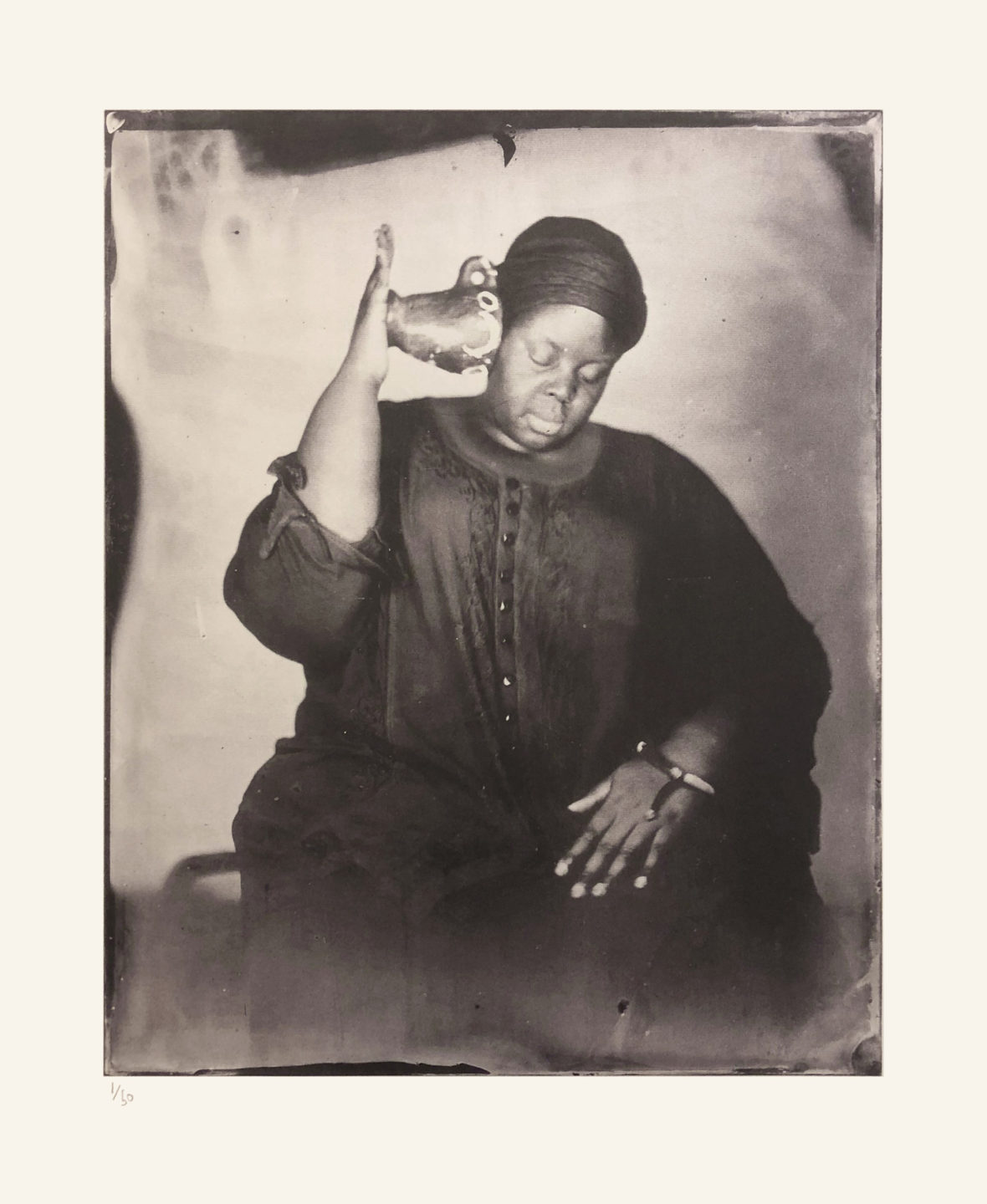
Available as a portfolio of nine silkscreen prints on Somerset Satin White 300gsm paper
Each: 61.3 x 50.2 cm
24 1/8 x 19 3/4 in
Edition of 50
Khadija Saye, Andichurai, 2018
More info‘I wanted to investigate how a portrait could function as a way of announcing one’s piety, virtue, soul, and prosperity.’ — Khadija Saye
For the Diaspora Pavilion, during 2016–2017 Saye developed a series of nine tintypes. Titled Dwelling: in this space we breathe these works explore the ‘migration of traditional Gambian spiritual practices’. This series was part of an interrogation of Saye’s heritage and mixed faith background visible in her previous photographic work. Saye’s parents were both from The Gambia; her mother, who died with her in the Grenfell Tower fire, was a Christian and her father, who survives her, is Muslim. Saye described her practice as a means to explore ‘the deep-rooted urge to find solace in a higher power’.
Saye’s medium for this work was wet plate collodion tintype, which is a precarious, fragile method of printing. She said: ‘Taking inspiration from the development of portraiture in the fifteenth century, I wanted to investigate how a portrait could function as a way of announcing one’s piety, virtue, soul, and prosperity’. By working for the first time with volatile tintypes, a medium so easily affected by elements outside of the control of the artist, the theme of surrendering control to a higher power was somehow exemplified within the materiality of the work. One of these tintypes, Nak Bejjen, is now in the collection of Tate, presented by Tate patrons in 2019.
3
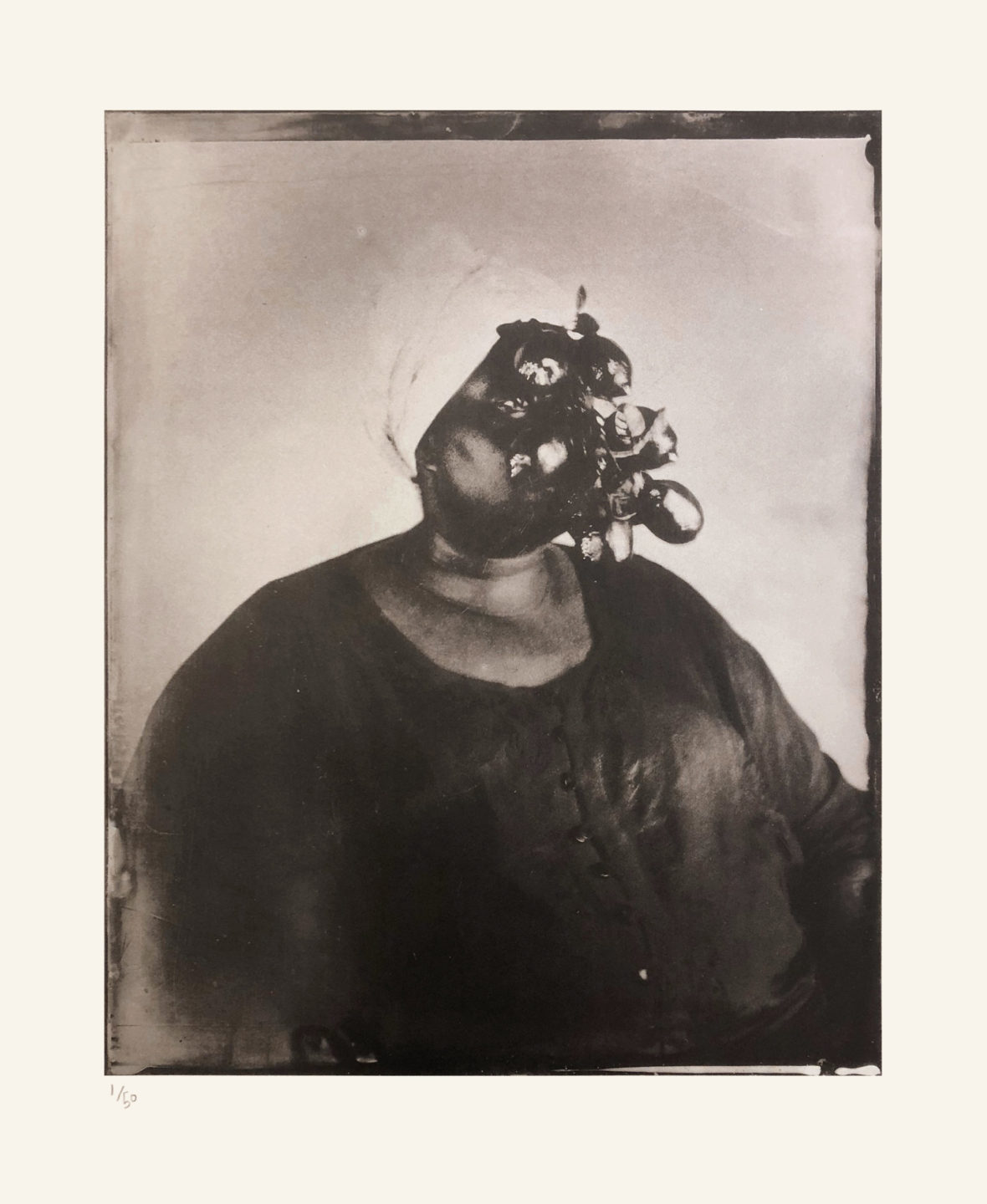
Available as a portfolio of nine silkscreen prints on Somerset Satin White 300gsm paper
Each: 61.3 x 50.2 cm
24 1/8 x 19 3/4 in
Edition of 50
Khadija Saye, Limoŋ, 2018
More info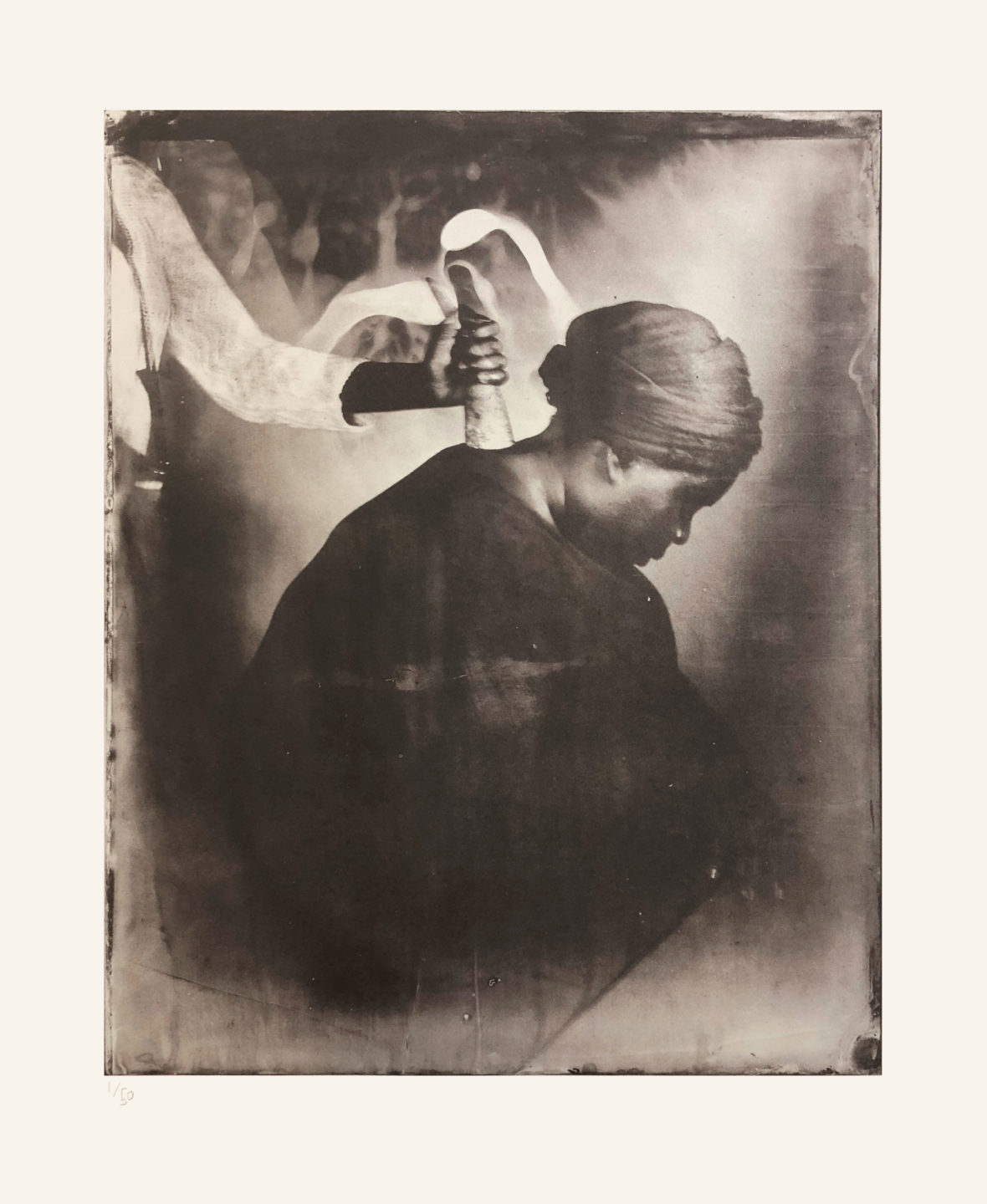
Available as a portfolio of nine silkscreen prints on Somerset Satin White 300gsm paper
Each: 61.3 x 50.2 cm
24 1/8 x 19 3/4 in
Edition of 50
Khadija Saye, Nak Bejjen, 2018
More infoWriting about Dwelling: in this space we breathe, Saye commented:
‘The series was created from a personal need for spiritual grounding after experiencing trauma. The search for what gives meaning to our lives and what we hold onto in times of despair and life changing challenges. We exist in the marriage of physical and spiritual remembrance. It’s in these spaces in which we identify with our physical and imagined bodies. Using myself as the subject, I felt it necessary to physically explore how trauma is embodied in the black experience. Whilst exploring the notions of spirituality and rituals, the process of image making became a ritual in itself.’
‘We exist in the marriage of physical and spiritual remembrance. It’s in these spaces in which we identify with our physical and imagined bodies.’ — Khadija Saye
4
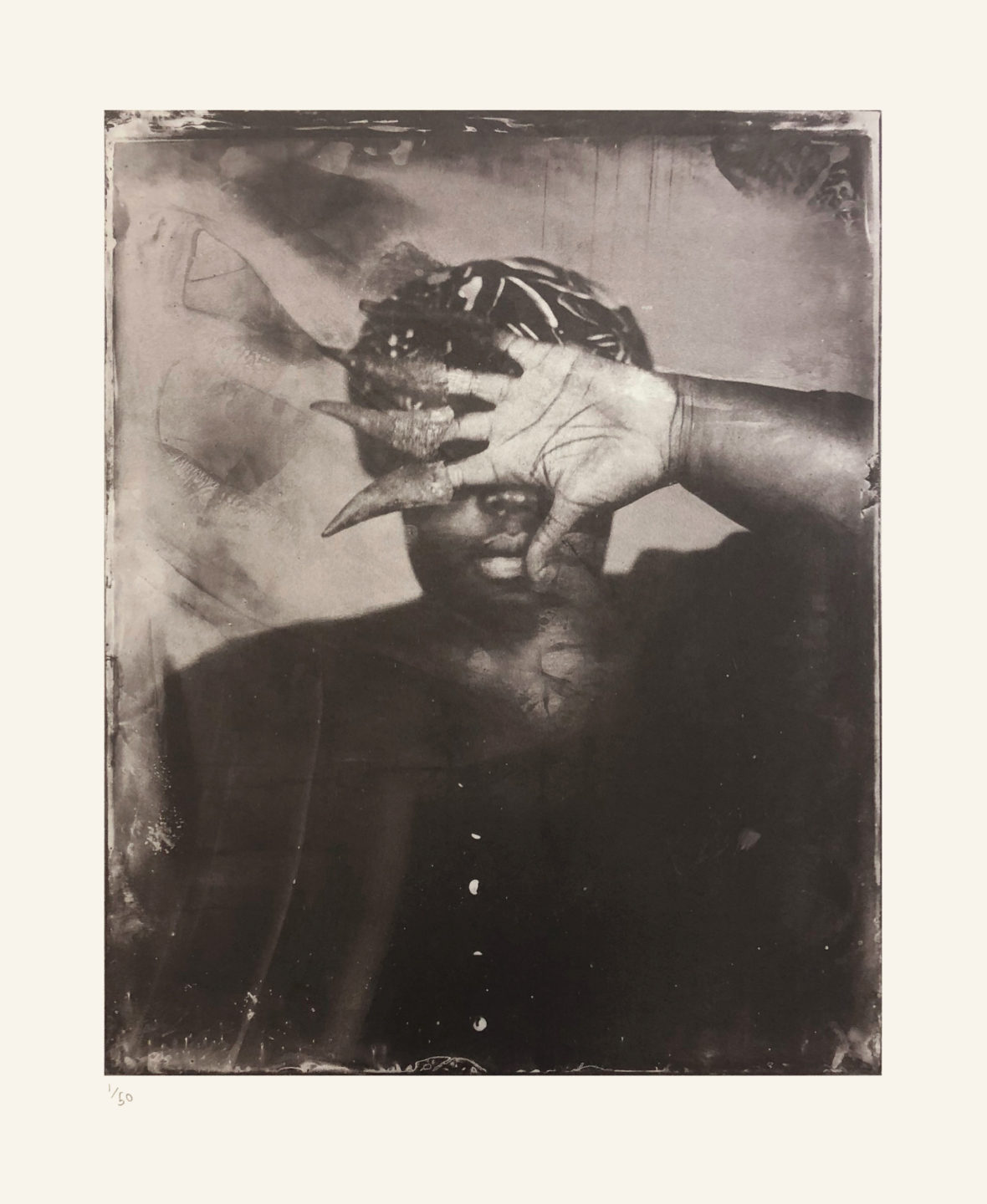
Available as a portfolio of nine silkscreen prints on Somerset Satin White 300gsm paper
Each: 61.3 x 50.2 cm
24 1/8 x 19 3/4 in
Edition of 50
Khadija Saye, Ragal, 2018
More info‘Within this process, you surrender yourself to the unknown, similar to what is required by all spiritual higher powers: surrendering and sacrifice.’ — Khadija Saye
‘The journey of making wet plate collodion tintypes is unique in the sense that no image can be replicated and the final outcome is out of the creator’s control. Within this process, you surrender yourself to the unknown, similar to what is required by all spiritual higher powers: surrendering and sacrifice. Each tintype has its own unique story to tell, a metaphor for our individual human spiritual journey. The process of submerging the collodion covered plate into a tank of silver nitrate, ignites memories of baptisms, the idea of purity and how we cleanse in order to be spiritually sound. The application of the collodion transcends the photographic process, it is a reflection, physical manifestation of my relationship to the deep-rooted tradition of African spirituality. The laborious process involved with tintypes addresses the current disposable era where materials are rapidly produced and short lived. We forget to live through the moment, remain in the silence, and work on our internal connections.’
5
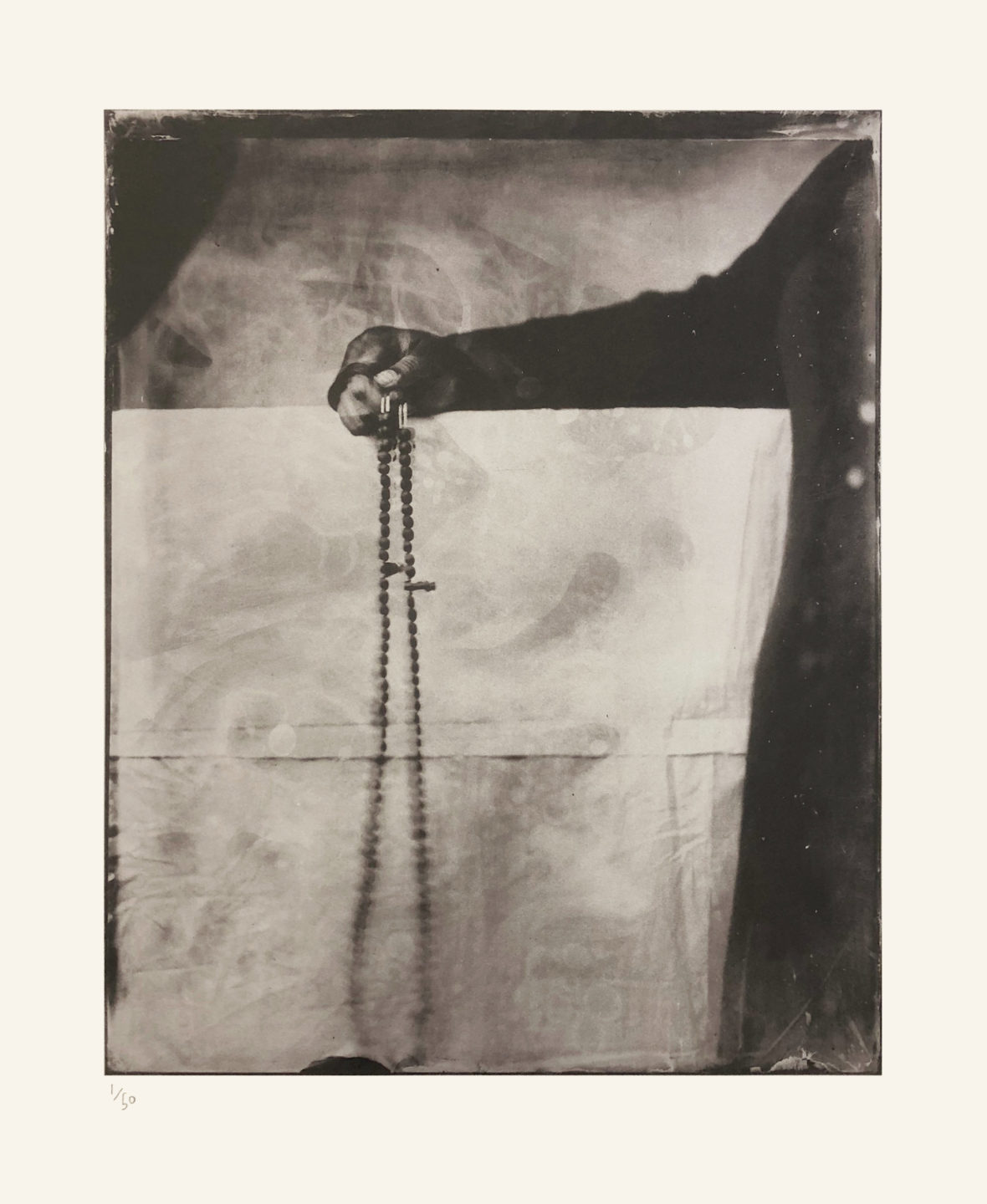
Available as a portfolio of nine silkscreen prints on Somerset Satin White 300gsm paper
Each: 61.3 x 50.2 cm
24 1/8 x 19 3/4 in
Edition of 50
Khadija Saye, Kurus, 2018
More info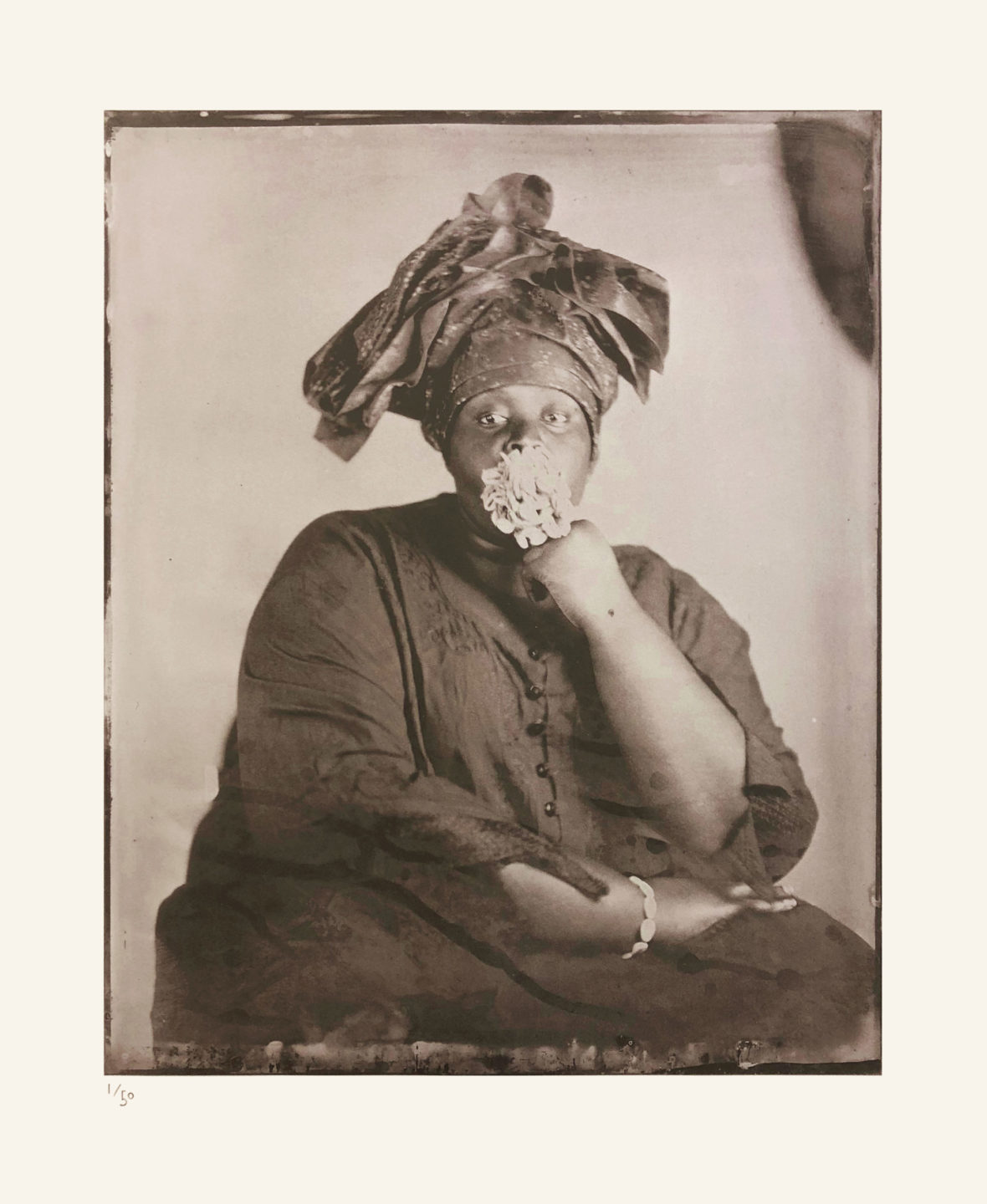
Available as a portfolio of nine silkscreen prints on Somerset Satin White 300gsm paper
Each: 61.3 x 50.2 cm
24 1/8 x 19 3/4 in
Edition of 50
Khadija Saye, Peitaw, 2018
More info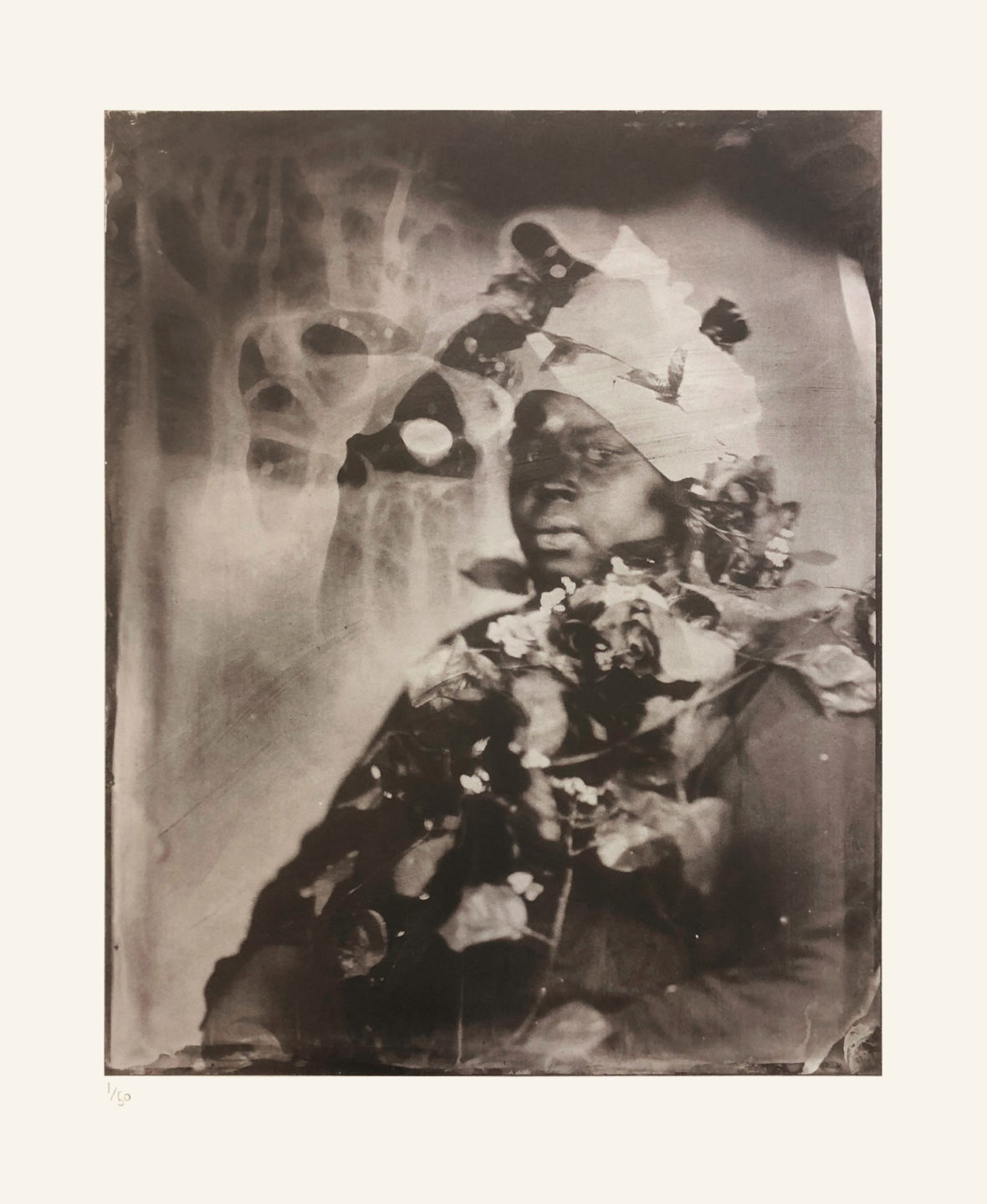
Available as a portfolio of nine silkscreen prints on Somerset Satin White 300gsm paper
Each: 61.3 x 50.2 cm
24 1/8 x 19 3/4 in
Edition of 50
Khadija Saye, Toor-Toor, 2018
More infoin this space we breathe
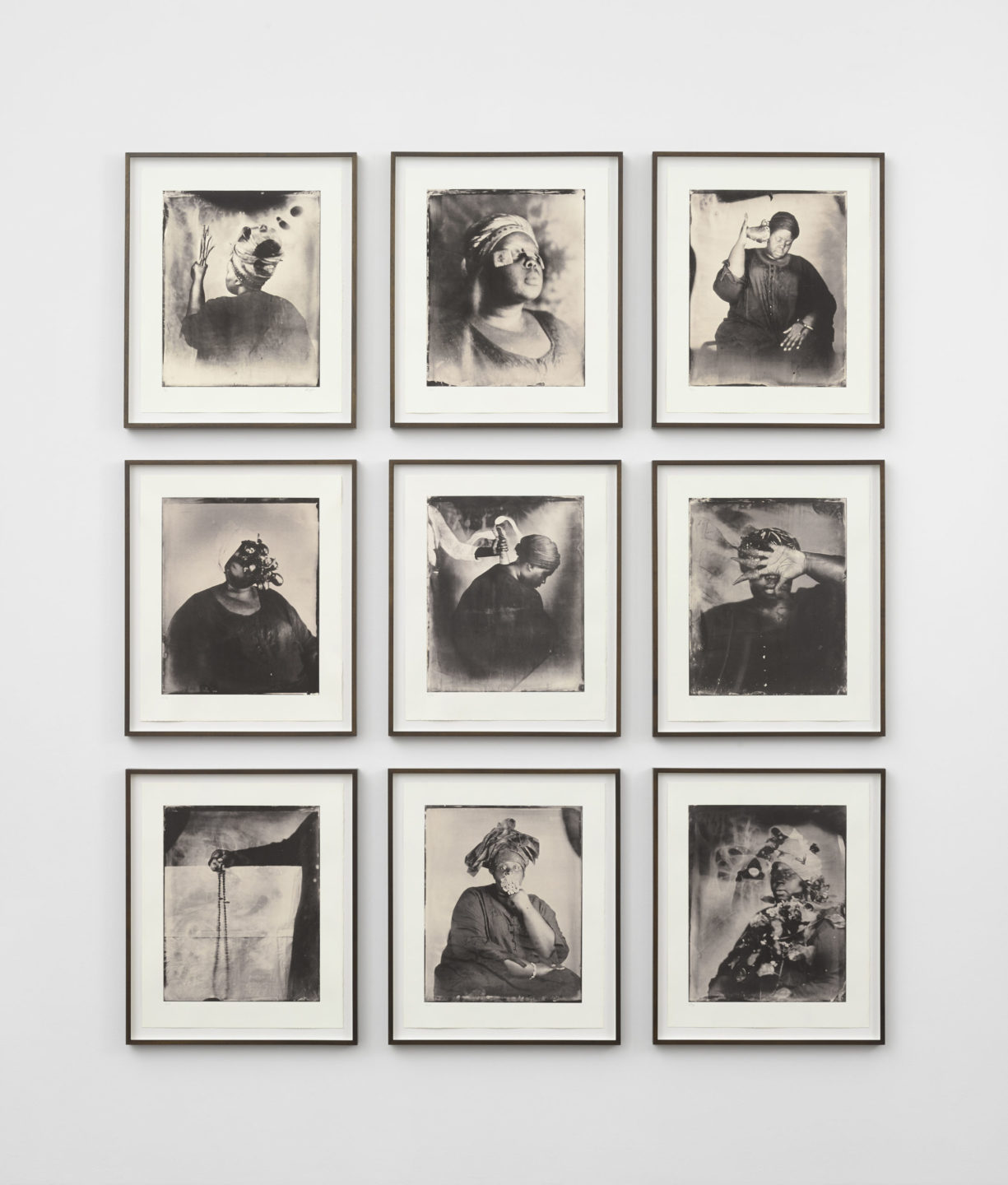
Available as a portfolio of nine silkscreen prints on Somerset Satin White 300gsm paper
Each: 61.3 x 50.2 cm
24 1/8 x 19 3/4 in
Edition of 50
Khadija Saye, in this space we breathe, 2017–18
More info‘Using myself as the subject, I felt it necessary to physically explore how trauma is embodied in the black experience.’ — Khadija Saye
Saye was only able to exhibit six of these works in the Diaspora Pavilion and she agonised over which to choose. In 2017, in collaboration with the Studio of Nicola Green and Jealous she went on to create a silkscreen print of one of the exhibited works, titled Sothiou, using a high-resolution raw scan. Raw scans of the eight additional tintypes have been recovered and used to make 50 portfolio sets of nine silkscreen prints, each including the original signed, dated and numbered silkscreen print of Sothiou.
The silkscreen works were first seen together in the exhibition Rock My Soul, curated by Isaac Julien and held at Victoria Miro, October–November 2019. The exhibition, which featured new and historical works by Njideka Akunyili Crosby, Sonia Boyce, Karon Davis, Zanele Muholi, Wangechi Mutu, Frida Orupabo, Howardena Pindell, Betye Saar, Khadija Saye, Tschabalala Self and Lynette Yiadom-Boakye, borrowed its title from the eminent black feminist scholar and writer bell hooks’ 2003 book, in which she investigates the role of black self-esteem in empowering a body politic both culturally and politically. She writes: ‘without self-esteem everyone loses his or her sense of meaning, purpose, and power’.
About the Khadija Saye IntoArts Programme
In memory of Khadija Saye, and inspired by her life, the Khadija Saye IntoArts Programme at IntoUniversity launches on 7 July 2020. The programme, founded by social historian and visual artist Nicola Green, brings together and introduces new arts-focused activities at IntoUniversity centres across the country. IntoUniversity serves disadvantaged young people across 27 local community learning centres, working with children from age seven upwards, and opening young people’s minds to the power of education by providing ongoing academic support, mentoring and aspiration-raising activities.
From the age of seven Saye’s talent was nurtured by IntoUniversity, a national education charity. She attended IntoUniversity’s Carnival Arts Programme, where her instinctive creativity was ignited, nurtured and developed over successive summers. For more than ten years Saye received support with her learning and encouragement for her ambitions.
Through IntoUniversity, she was awarded an Arnold Foundation Scholarship for sixth form at Rugby School where she discovered her talent for photography. IntoUniversity also supported Saye in her journey to the University for the Creative Arts where she studied photography. In disadvantaged communities across the UK there are many other young people who, like Khadija, could benefit from support in order to achieve their ambitions. The Khadija Saye lntoArts Programme will enable more young people to follow in her footsteps and show the originality of their voice and their talent.
With special thanks to the Khadija Saye IntoArts Programme patrons & sponsors: Erica Bolton, Sue Charles, Christie’s, Darbyshire Ltd, The Studio of Nicola Green, Jealous, Isaac Julien, David Lammy, Rebecca King Lassman, M.A.R.S, Metro Imaging Ltd, Victoria Miro, Jemma Read, Rees & Co, John Purcell Paper.
About Breath is Invisible
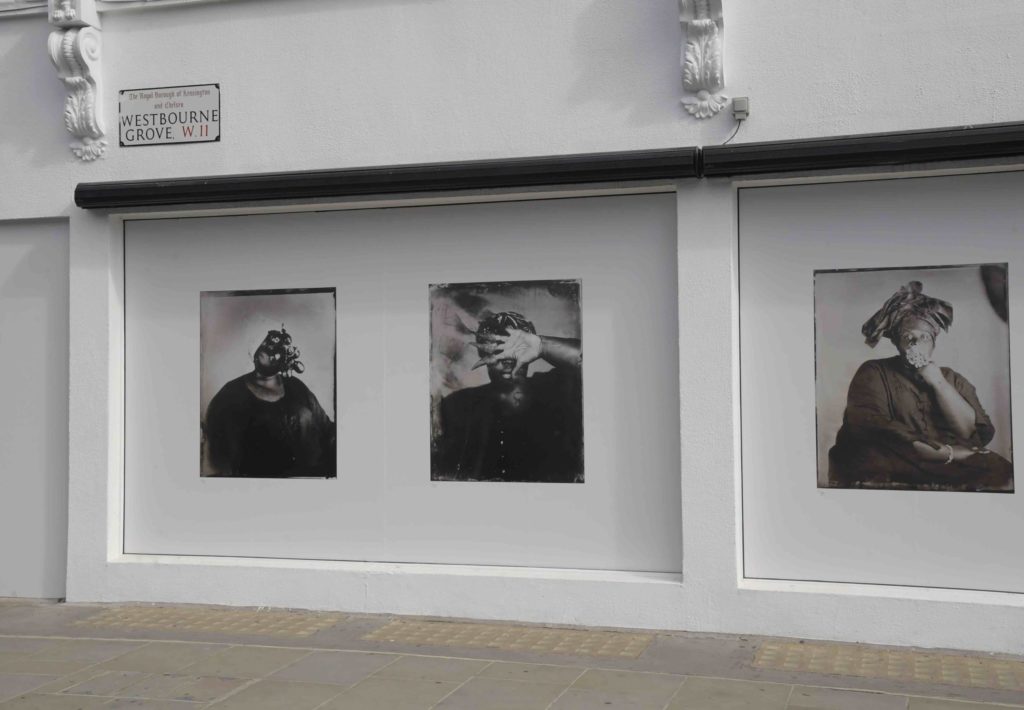
Breath is Invisible (7 July–9 Oct 2020) is a new public art project launched in Notting Hill with an installation of works by Khadija Saye. Later this summer artists Martyn Ware, Zachary Eastwood-Bloom and Joy Gregory will present site-specific commissions created in partnership with the local community.
Working collaboratively with young creatives and arts organisations in the area, Breath is Invisible was born out of an urgency to address issues of social inequality and injustice. Breath is Invisible is the brainchild of entrepreneur Eiesha Bharti Pasricha and is curated by Sigrid Kirk.
Vortic Installation
About London Collective on Vortic Collect
London Collective is a new section on the Vortic Collect app, bringing together 40 of the UK’s best commercial galleries to present exhibitions on the new extended reality app for the art world.
London Collective consists of 40 art dealers and gallerists who came together in recognition that this is a defining moment of change in how art is accessed. Whilst a number of London galleries have recently reopened, travel and other restrictions mean many people are still unable to visit exhibitions in person.
In the London Collective section of the Vortic Collect app, galleries will show specially curated presentations, providing them with an additional virtual space to complement their physical gallery programmes.
The new initiative enables galleries to support one another by sharing their audiences and enables visitors to simulate the experience of visiting multiple London gallery locations.
Learn more about Vortic here or please contact enquiries@vorticxr.com
Victoria Miro: for sales enquiries regarding featured works, please contact Divya Pande: divya@victoria-miro.com
